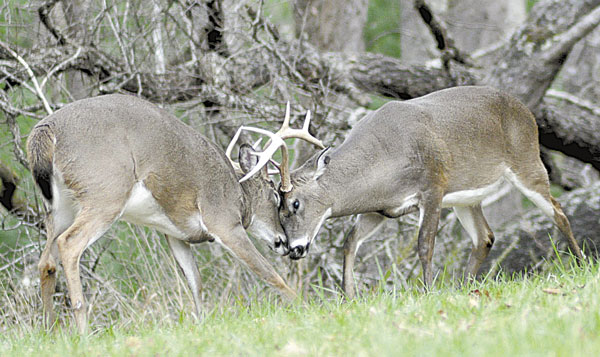
Prospects look great this season despite a harvest drop in 2009.
The cliche that claims “the more things change, the more they remain the same” apparently applies to North Carolina’s whitetail deer herd.In looking at a decline in the 2009 harvest after seven straight years of increases, some hunters might be inclined to push the panic button. But just because fewer deer were killed last season shouldn’t be a cause for alarm, according to the N.C. Wildlife Resources Commission’s top deer biologist. The 2009 harvest of 169, 273 was four percent lower than 2008, but it was still the third-highest on record.
The same counties that usually lead the state in deer kills remained on top in 2009.
The overall harvest drop “probably just means the state’s deer herd has leveled off a bit in a lot of regions,” said Evin Stanford, the N.C. Wildlife Resources Commission’s chief deer biologist. “We had a few sporadic outbreaks of epizootic hemorrhagic disease last year, but it was nothing major. We didn’t have any huge die-offs of deer anywhere, and I don’t think EHD contributed in any major way to the decline.”
The only surprising part of last year’s harvest drop was where it occurred — in the four eastern districts that usually account for the state’s largest harvests because they contain the most whitetails of any region.
But hunters in Districts 1, 2, 3 and 4 still managed to kill 88,083 deer, almost half the total 2009 harvest. In addition, hunters in 10-county District 3 tagged 31,355 deer, which was 8,421 more than runner-up District 5, a Piedmont region with 11 counties.
Not only that, but District 3 contained perennial harvest leaders Halifax, Northampton and Edgecombe counties, while Bertie, which also usually has a niche in top-3 deer harvests, is in District 1. Even though each of those regions saw harvest declines, they still led the state’s counties with Halifax hunters tagging 5,443 deer, Northampton showing 5,183 kills and Bertie with 4,636.
“It’s also possible after the big harvest the previous year, there simply weren’t as many deer in those districts, or there was a bigger mast crop, which had deer remaining in the woods and not moving as much so they weren’t out in the open fields as much,” Stanford said.
The state continues to have about 1.2 million whitetails in its deer herd.
Interestingly, Halifax County hunters had an almost perfect 50-50 split between bucks and does reported, bagging 2,502 male deer and 2,503 females (excluding 538 button bucks).
What should be most pleasing to hunters and definitely make biologists smile is the fact that hunters are taking more does each season, an indicator that more people are interested in managing deer herds for “quality” bucks with bigger racks.
During 2009 statewide, 81,282 antlered bucks and 75,379 does fell to hunters, a 52-to-48 ratio. That doesn’t include the 12,611 button bucks that hunters harvested, yet a buck-to-doe harvest ratio that’s nearly even also suggests Tarheel State hunters are becoming more interested in having a quality herd. Until recent years, hunters’ annual harvest was around 60 percent bucks.
For more evidence of the interest in having bigger-racked bucks — a recent survey indicated 82 percent of Tarheel State hunters like having a chance at quality deer — one only has to look at the racks entered at the 2010 Dixie Deer Classic in Raleigh. Once again hunters brought a load of extremely high-scoring deer to the Classic; eight bucks boasted at least 160 inches of antlers.
From looking at those top-drawer Dixie Deer Classic bucks, it’s obvious as well the northern tier of counties — the so-called “trophy belt” — continue to produce the state’s largest-racked bucks, even though a few notable deer from other regions showed up at Raleigh. The biggest bucks at the 2010 Classic came from Guilford, Chatham, Granville, Caswell, Person and Ashe counties, but Mecklenburg, Franklin and Moore counties also made inroads.
In top-10 county harvests, for Wilkes County in the state’s mountainous northwest region and Pender County in the southeastern coastal plane, the number 411 had significance. Wilkes added 411 bucks to its 2008 harvest to record 4,546 deer in 2009 and jump to fourth place in state rankings. Oddly enough, Wilkes exchanged places with Pender County, the No. 4 county in 2008, where hunters tagged 3,711 whitetails in 2009 — 411 less than the previous season.
Anson County of the southern Piedmont rated No. 6 in 2009 with 3,700 whitetails (an increase of 361 over 2008), while Duplin County and Beaufort County, both in southeastern North Carolina, ranked seventh and eighth last season with 3,231 and 3,150 deer harvested, respectively. Edgecombe climbed one spot to ninth in 2009 with 3085 deer kills. Franklin County, where hunters took 3,068 deer in 2009 — a decrease of 457 from 2008 — dropped from No. 6 to No. 10 in the overall harvest rankings.
For hunters without access to private land, game lands might provide an answer this coming season.
Although the Commission doesn’t list specific game-land harvests because so many individual game lands overlap into county lines, one can make a fairly good estimate by cross-checking counties with game-lands harvest statistics.
Wake County, which contains portions of Butner/Falls of the Neuse, Jordan Lake and Shearon Harris game lands, led all counties in game-lands harvests in 2009 with 388 deer. While there’s no way to know which of the three public-hunting areas produced the most deer, it’s likely the majority came from Butner/Falls and Jordan because they contain more huntable territory than Harris.
Bertie County rated No. 2 in game-land harvests with 357 tagged whitetails. It contains Batchelor Bay, Bertie County and Roanoke River Game Lands and National Wildlife Refuge, with the majority of its harvest likely originating from the Roanoke River region.
Chatham, a central Piedmont county that contains most of the Jordan Lake game land acreage and also part of Shearon Harris game lands — ranked third with 337 deer kills.
Montgomery County, home to the sprawling Uwharrie National Forest Game Land and a portion of the Yadkin River drainage, is just south of the heavily-populated Triad region and within easy driving distance of Charlotte hunters. It ranked fourth with 317 game-land deer kills.
Columbus County, with Juniper Creek and Columbus County game lands in southeastern North Carolina, rated fifth with 276, the majority coming from Juniper Creek.
Primitive-weapons hunters (archery and muzzleloader) found success in the Piedmont and northwestern counties. No eastern counties made the top-10 list for bow-and-arrow or smokepole harvests in 2009.
Wilkes County apparently has the best archers and muzzleloader hunters in the state; bowhunters took 565 deer there last year, and blackpowder hunters killed another 653 — No. 1 in both division for the second year in a row.
Harnett County repeated at No. 2 for archery harvests in 2009 with 485, followed by Stokes with 427, Rockingham with 379 and Yancey with 365.
Montgomery County muzzleloader kills totaled 513 in 2009 to trail Wilkes in that category. Alleghany County was third at 512, followed by Stokes at 509 and Ashe with 431.
Ironically, if a hunter is interested in taking a buck this season, little correlation exists between counties with the largest buck harvests and the highest harvest of bucks per square mile. Only three counties with top-10 bucks-per-square mile totals earned places on 2009’s top-10 buck harvest list.
Halifax County ranked No. 1 in buck harvests (2,502) and fifth in bucks per square mile (4.39). Northampton County rated No. 2 in buck harvests with 2,336 and third in bucks per square mile with 5.17. Franklin County, with 1,510, rated eighth in that category and sixth with 4.26 bucks per square mile.
Alleghany County sits atop the top-10 antlered-bucks-per-square-mile list with 6.82 followed by Vance (5.75), Northampton (5.17), Wake (4.73) and Halifax (4.39).
The implications from these statistics for hunters seem clear:
• Eastern counties will remain the top places to kill a deer, but public-land hunting opportunities are few and far between in the northeastern section, excluding the permit-only Roanoke River Game Land and National Wildlife Refuge.
• Best eastern game-lands bets will be Holly Shelter and Angola Bay game lands and the Croatan National Forest.
• Although hunters have a good chance to take a deer in the east, they continue to have better chances of bagging a trophy elsewhere. Likely reasons are fewer rack-building minerals in the soil and higher numbers of deer in competition for food, plus dog-hunting’s dominance.
• If you’re interested in bagging a doe for venison, try the eastern counties, which had the highest doe harvests in 2009.
• If you want a chance at a big buck, try one of the counties or game lands in the V-shaped “trophy belt” stretching from Warren County in the northeastern piedmont to Ashe in the far northwest corner and down to Moore County in the south-central piedmont.
• Primitive weapons (archery or muzzle-loader) hunters are most successfully used in the northwestern counties, especially Ashe, Alleghany, Stokes and Wilkes.
As an added note, it’s possible hunters this season may be able to hunt with crossbows and not have a doctor’s permit, and a 2-week muzzleloader season could be approved.
If bills drafted to stop unrestricted crossbow use and a 2-week muzzleloader season are defeated or held up in committee at the state legislature, hunters may be able to use crossbows during any deer season this year without first obtaining a doctor’s permission, and muzzle-loader season may extend from one to two weeks. However, the outcomes of these two bills are uncertain.
In anticipation of another delay of postponed 2009 proposals, the Commission will publish its regulations digest on Aug. 1 instead of July 1.

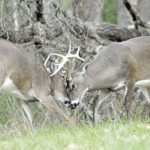
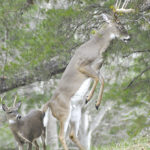
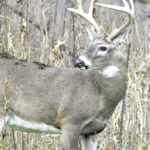

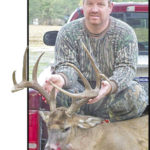
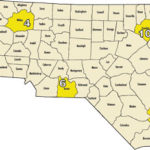



Be the first to comment